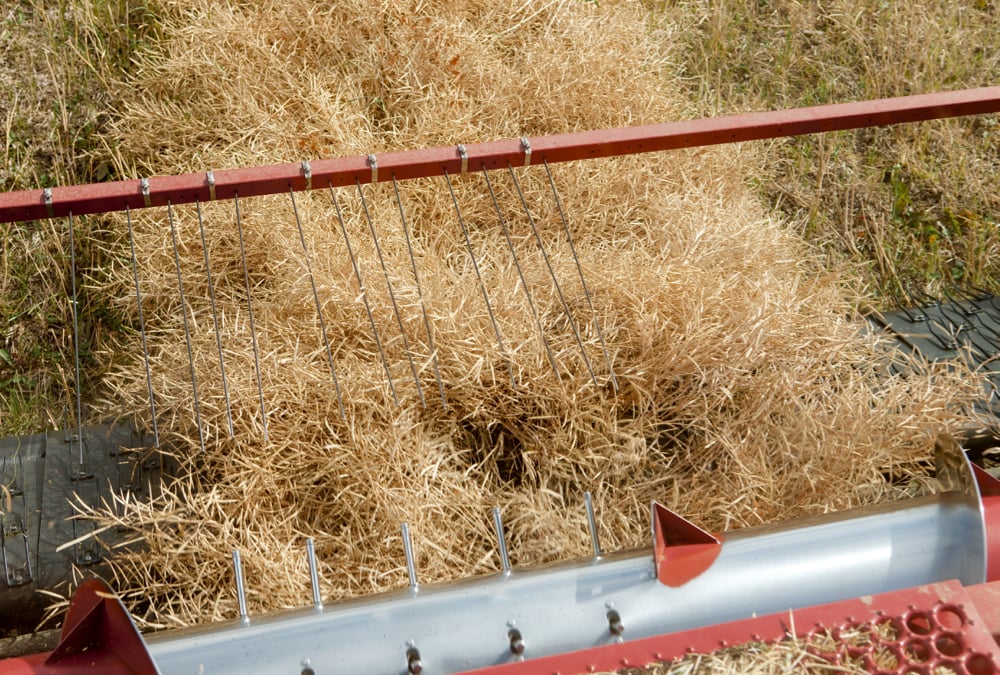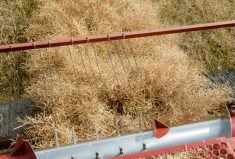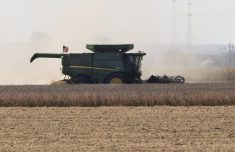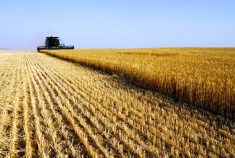The Red River won’t likely crest until the middle of May in southern Manitoba, provincial flood forecasters announced April 18.
It means cropland adjacent to the river could remain flooded into June.
In its latest flood update, the Manitoba government said snowstorms this month in North Dakota and southern Manitoba have increased the risk of spring flooding.
Forecasters now expect the Red River to reach levels slightly higher than 2009, which was the second largest flood in the last 150 years. However, water levels this spring are not expected to come close to 1997, an event known in Manitoba as the flood of the century.
Read Also

Alberta harvest wrapping up: report
Harvest operations advanced to 96 per cent complete in Alberta as of Oct. 7, with only a few late-seeded cereal and canola fields remaining, according to the latest provincial crop report.
Homes and communities along the Red are not at risk this year because of steps taken following the 1997 flood. Federal, provincial and municipal governments spent hundreds of millions to build ring dikes around towns, and homes were rebuilt at higher elevations on earthen mounds.
However, this year’s flood may cause more headaches for farmers with cropland along the river. The river crested in the middle of April in 2009, but the U.S. National Weather Service recently said the Red River won’t likely reach peak flows until the middle of May.
That means the crest could arrive in southern Manitoba in the latter half of May.
As of April 19, most fields in southern Manitoba remained covered with 15 to 25 centimetres of snow, and temperatures 10 degrees colder than normal have delayed the spring melt.
The tardy arrival of spring will certainly affect corn acres in southern Manitoba, said Theresa Bergsma, general manager of the Manitoba Corn Growers Association.
“The second and third weeks of May are usually the biggest time for corn acres to go in,” Bergsma said at a Keystone Agricultural Producers meeting in Portage la Prairie.
Last year, Manitoba set a record with 300,000 acres of grain corn. However, Bergsma said farmers are unlikely to break that record this year, despite robust demand for corn seed in the fall.
“If farmers are going by the second week of May, I think we’ll stay stable to where we were last year.”
May 30 is the crop insurance seeding deadline for corn for most regions. Bergsma said experienced growers don’t normally seed past that date.
“Once that crop insurance deadline comes along, they (growers) are done,” she said.
“They know the risk and they don’t push it and go for the reduced (insurance) coverage.”
Until this year, corn was an insurable crop only in regions of Manitoba that had a satisfactory number of growing degree days. However, the province announced this year that it would extend insurance coverage, on a test basis, for grain corn, soybeans, sunflowers and dry edible beans to most growing regions.
Producers in those areas may want to think twice before they plant corn, Bergsma said.
“I would almost hope that farmers, who are for the first time growing (corn) … if they’re not on that field by mid-May that they seriously re-think their decision to grow corn,” she said.
“Those areas are going to need more time (for crop maturity) as it is. If you are growing for the first time in the test area, be very careful.”

















